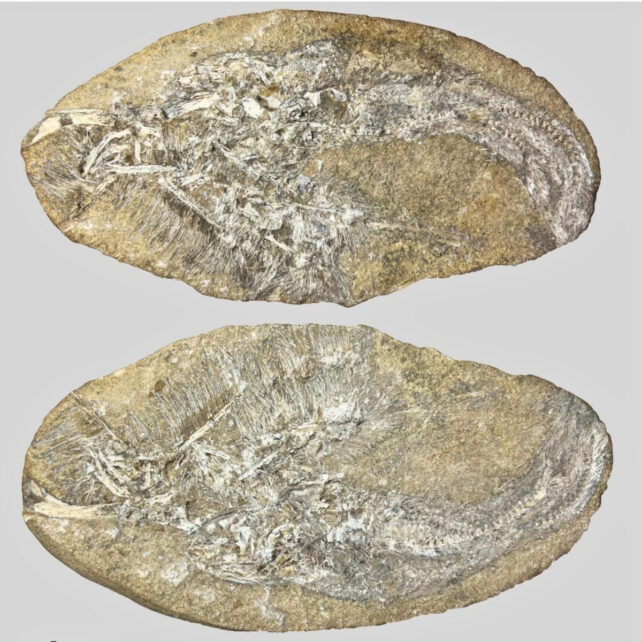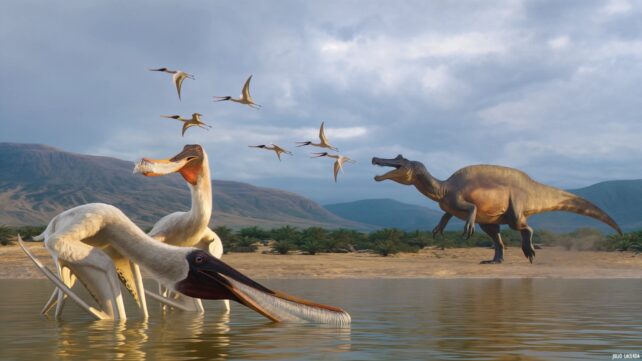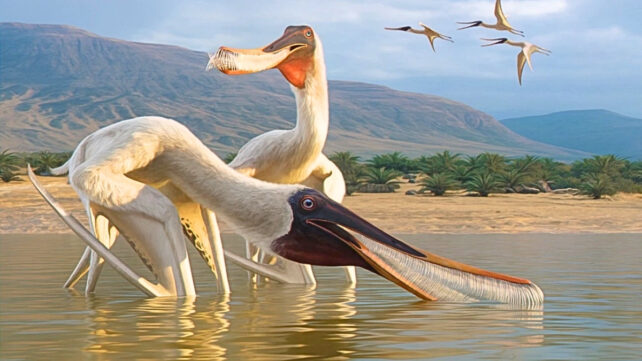Imagine throwing up after a bad burrito – only for that heave to reveal the existence of onions to scientists 110 million years in the future. That's pretty much what just happened, as paleontologists describe a new species of pterosaur from remains found in fossilized dinosaur vomit.
The new species has been named Bakiribu waridza, which means "comb mouth" in the language of the Kariri people, who are indigenous to the region of Brazil where the fossil was discovered.
The reason for that name is clear at a glance: The pterosaur's jaws are packed with long, bristle-like teeth, which it probably used to filter-feed tiny creatures out of the water, like modern baleen whales.
Related: The Rise of The Dinosaurs Can Be Tracked in Their Fossilized Poop
And we might never have known Bakiribu existed, had it not been for an ambitious dinosaur trying to make a meal of it. The bones of two individuals were spotted in a strange concretion, along with four fish.
On closer inspection, paleontologists from Brazil determined that it was most likely a regurgitalite – in plain terms, fossilized vomit.

Some of the pterosaur bones had been cracked and broken, potentially from the predator chewing them. But the dinosaur didn't keep its food down for long – those comb mouths wouldn't have been easy to digest.
"Based on the spatial arrangement of the remains, it is plausible that the predator consumed the pterosaurs first, followed by the fish, and subsequently regurgitated a portion of the ingested mass, likely in response to mechanical discomfort or obstruction caused by pterosaur skeletal elements," the researchers write in their published paper.

The identity of the dinosaur whose eyes were bigger than its belly remains unconfirmed, but the prime suspect is a spinosaurid.
These predators weren't necessarily the vicious, T. rex-fighting monsters they're portrayed as in Hollywood – instead, they're thought to have mostly chowed down on fish, with the occasional pterosaur on the menu too.
Bakiribu is the first filter-feeding pterosaur found in Brazil, and it seems to have an intriguing mix of features that help paleontologists fill in the blanks on the evolution of these flying reptiles.
But most fascinating is getting a glimpse into interactions between at least three species that once shared an ecosystem.
The research was published in the journal Scientific Reports.

